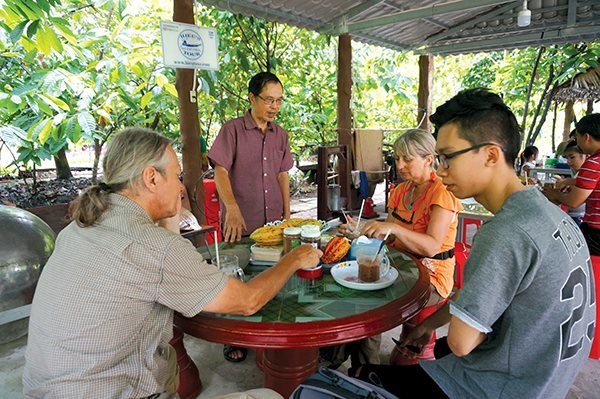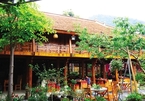The latest annual report of the Vietnam National Administration of Tourism (VNAT) showed that homestays had developed moderately until 2017 when the business model unexpectedly soared.

By that year, there had been 1,763 homestays with 12,948 rooms, or 521 more homestays and 3,778 rooms than in 2016, which accounted for 10.1 percent of total accommodation units and 3.4 percent of rooms.
However, analysts believe that the real figures could be even higher.
“You can see homestays everywhere, and homestay is a kind of ‘easy to be born but difficult to live’ service,” an analyst said.
Duong Minh Binh, chair of CBT Travel, a consultancy expert, confirmed that there are many homestays which compete fiercely.
|
The latest annual report of the Vietnam National Administration of Tourism (VNAT) showed that homestays had developed moderately until 2017 when the business model unexpectedly soared. |
A number of homestays in Quang Binh have slashed the room rate to tens of thousands of dong per night and many homestays in Vinh Long, Tien Giang and Ben Tre have shut down because of low occupancy.
Homestays are not only a part of community tourism, or a tool to improve income by sharing home with travelers, but also an investment channel.
Many investors spend big money to develop homestays. In Quang Nam province, investors buy and lease beautiful villas to develop homstay services. In Da Lat and Vung Tau, investors spend billions of dong to lease houses and make interior re-decor for re-lease.
It is expected that the homestay supply will increase because many localities want to develop the service in order to develop tourism products and increase income for locals.
What will happen?
Analysts say the demand for homestays is increasing, but is not high compared with other types of accommodation services.
Bui Viet Thuy Tien, CEO of Asian Trails, warned of the risks in investing in homestays. More European travelers choose homestays when coming to Vietnam because they want to approach locals to learn about their lives. However, homestays will have few guests in summer, because Europeans mostly travel in year-end season.
Homestay owners have been advised to provide products which allow travelers to have more experiences in Vietnam. If homestays just provide meals and accommodations, they won’t be attractive to travelers.
Meanwhile, the development and lack of connectivity have resulted in unhealthy competition, in which homestays try to slash service fees to scramble for guests.
Mai Lan

Homestay hotspots shining brightly
Homestay accommodation is rising in Vietnam to help diversify tourism products, create new experiences for the growing number of tourists at peak season.

How should investors prepare for homestay race in Vietnam?
Rising demand for homestay in Vietnam enables investors to consider investment portfolio.
 Problems have arisen after a hot development period of homestay service over the past few years. Many homestays have shut down, while existing homestays have kicked off unhealthy competition by slashing rents.
Problems have arisen after a hot development period of homestay service over the past few years. Many homestays have shut down, while existing homestays have kicked off unhealthy competition by slashing rents.